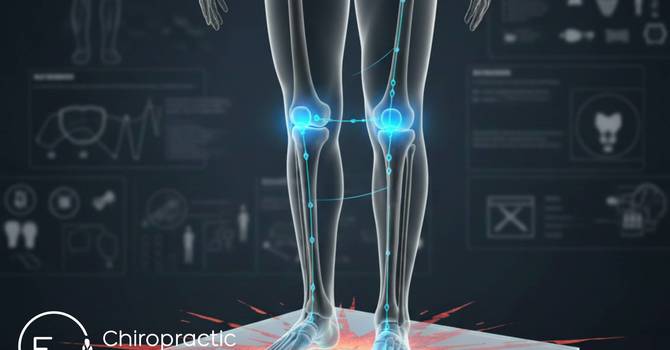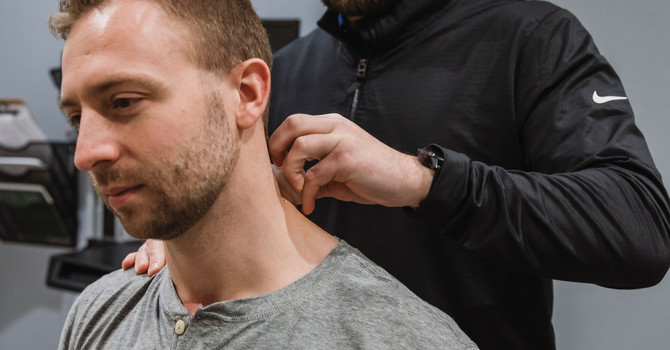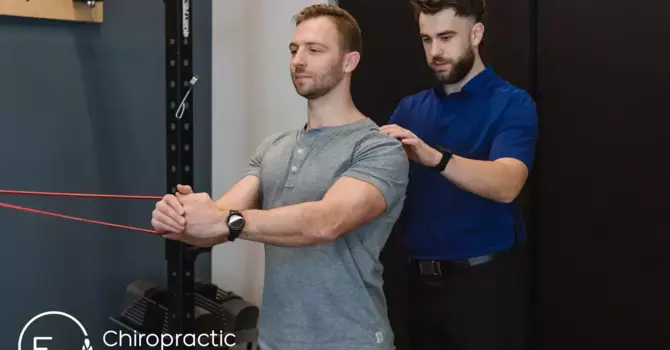
You’re eating clean, hitting the gym consistently, following a solid training plan—and yet somehow, that shoulder still tweaks during presses, or your knee flares up halfway through a run. Frustrating, right?
The truth is, most workout-related injuries aren’t the result of a single “bad lift” or poor luck. They’re often the final straw in a long chain of faulty movement patterns your body has been compensating for. The real culprit? Movement imbalances.
At E3 Chiropractic + Wellness, we see this all the time—especially among active adults in Saskatoon who lift, run, CrossFit, or train hard. The body is incredibly adaptive. But when one part isn’t pulling its weight, others step in…and over time, that compensation leads to breakdown.
If you’ve ever thought, “I don’t know why this hurts, I didn’t even do anything wrong,” keep reading. This blog will break down what movement imbalances are, why they’re the most overlooked cause of injury, and how to fix them before they derail your progress.
What Are Movement Imbalances?
In the simplest terms, a movement imbalance occurs when certain muscles or joints are overused while others are underused. This leads to poor mechanics, uneven load distribution, and strain on the wrong tissues during exercise.
Examples of common movement imbalances:
- Overactive quads + underactive glutes during squats or lunges
- Tight hip flexors + weak core during running
- Rounded shoulders + tight pecs paired with weak upper back muscles
- Excessive lumbar extension (low back arching) due to poor abdominal engagement
- These patterns may develop from:
- Repetitive movement (like running or sitting)
- Previous injuries (your body “protects” certain areas and shifts function elsewhere)
- Poor movement habits or training form
- Sedentary lifestyle combined with bursts of intense exercise
The issue? These imbalances often go unnoticed until pain shows up—and by then, there’s often inflammation, tissue irritation, or even structural injury.
Why They Matter More Than You Think
Many athletes and active individuals focus on fixing symptoms—the pain in the shoulder, the ache in the knee, or the tightness in the back. But those symptoms are usually just the result of a deeper imbalance upstream or downstream.
Ignoring the imbalance means:
- You’re likely to reinjure the area
- Other injuries can develop from ongoing compensation
- Your performance and recovery are limited, no matter how well you train
This is where our team at E3 Chiropractic + Wellness comes in. We’re not just here to make the pain go away—we want to identify why it’s happening in the first place. Our comprehensive assessments look at how your entire body moves, not just where it hurts.
Common Workout Injuries Caused by Imbalances
1. Shoulder Impingement
Usually a result of:
- Poor scapular control
- Tight anterior (front) shoulder muscles
- Weak posterior chain (mid-back, traps, rear delts)
This imbalance causes the shoulder joint to move improperly, pinching tendons and leading to pain during pressing or overhead lifts.
Commonly caused by:
- Weak deep core engagement
- Tight hip flexors
- Limited hip or thoracic mobility
- Many lifters overuse their spinal extensors (low back) to make up for limited hip movement or core control—leading to irritation or disc-related issues over time.
3. Runner’s Knee (Patellofemoral Pain)
Typically linked to:
- Weak glutes, especially glute medius
- Poor ankle mobility
- Excessive inward knee collapse (valgus)
- Rather than just treating the knee, we look at foot mechanics, hip strength, and stride pattern.
How Do You Know If You Have a Movement Imbalance?
Here are some signs that imbalance may be behind your pain:
- You keep injuring the same area, even after rest
- One side of your body feels stronger or tighter than the other
- You notice compensations like leaning, shifting, or twisting during movements
- Your flexibility or mobility is significantly different side to side
- Pain shows up with specific movements, not at rest
At E3 Chiropractic + Wellness, your Saskatoon Chiropractor will walk you through a movement screening that includes:
- Functional movement tests
- Range of motion assessments
- Muscle strength and control testing
- Posture and gait evaluation
- From there, we create a personalized plan that not only relieves pain but corrects the imbalance causing it.
How to Correct Movement Imbalances
1. Stop Training Through Pain
Pain is your body’s way of saying something isn’t right. Pushing through often leads to compensation, further imbalance, and bigger setbacks. Modify movements as needed and seek help early.
2. Address Mobility First
If you can’t move through full range of motion (especially in the hips, shoulders, and thoracic spine), your body will find other, less optimal ways to complete the movement.
Incorporate:
- Dynamic warm-ups
- Mobility drills (hip openers, thoracic rotations, ankle mobility work)
- Foam rolling or myofascial release
3. Strengthen What’s Weak
This is the missing piece for many athletes. Once mobility is restored, you must strengthen the stabilizers and underactive muscles to restore balance.
Think:
- Glute activation exercises (bridges, clamshells, lateral walks)
- Core stability work (dead bugs, planks, Pallof presses)
- Scapular control drills (face pulls, wall slides, rows)
4. Train With Better Awareness
Focus on form and control over speed or load. Use mirrors or video feedback to watch for compensations. Pay attention to how you move, not just how much weight you lift.
Why Chiropractic Plays a Key Role
You don’t need to navigate all this alone. At E3 Chiropractic + Wellness, we specialize in identifying movement imbalances and correcting them through our proven E3 Approach:
- Evaluate: We find the root cause through in-depth movement assessment.
- Eliminate: We reduce pain and restore mobility through chiropractic adjustments, soft tissue therapy, and targeted mobility work.
- Empower: We give you strength and control exercises tailored to your needs to keep the issue from coming back.
A skilled Saskatoon Chiropractor from our team will help you move better, train better, and feel better—so you can stay active and injury-free long-term.
The Takeaway
If you’re serious about your training, your goals, and your health, don’t ignore the subtle warning signs. That shoulder pinch or hip tightness might not sideline you today—but left unchecked, it’s only a matter of time before it does.
Movement imbalances are one of the most common, yet overlooked causes of injury in active people. The good news? With the right approach, they’re also one of the most fixable.
Let E3 Chiropractic + Wellness help you uncover the hidden weaknesses that are holding you back—and set you up for long-term success.
Click HERE to book your movement assessment today with a trusted Saskatoon Chiropractor and stop training around pain. Start training with confidence.





